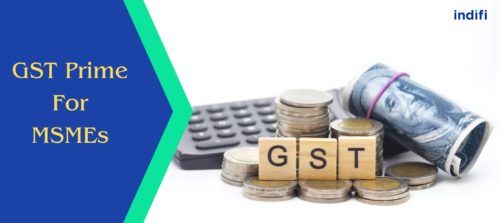
A software program called GST Prime was created to make the process of complying with the Goods and Services Tax (GST) in India easier. Advanced analytics, real-time data coordination, automated error-checking, invoicing, billing, and GST return preparation are just a few of the services it provides.
Key Features Of GST Prime
- Keeping an eye on tax compliance to spot non-filers of returns and take appropriate action against them.
- Locating and drawing attention to potential tax evasion schemes used by taxpayers, and building connections or potential relationships with other parties in the event of fraud.
- Finding and withdrawing claims for the Input Tax Credit that are not eligible.
- Possessing comprehensive taxpayer data via the taxpayer profile, etc.
- Risk-based tax payer analysis that aids in identifying cases for examination, audit, etc.
- AI-powered collection prediction.
Benefits Of GST For SMEs
Simplified Tax Structure: The GST simplifies the tax structure for SMEs by replacing several indirect taxes with a single, unified tax system. This reduces the cost of complying with several tax systems, which facilitates SMEs’ comprehension and compliance with tax laws.
Less Tax Dropping: The Goods and Services Tax (GST) makes possible the input tax credit system, which enables companies to deduct input taxes from their income. Because the dropping effect of taxes is eliminated, SMEs pay less in taxes overall and the cost of goods and services is decreased.
Also know:- What is the budget for GST in 2024?
Greater Market Access: SMEs can conduct business more easily across state lines thanks to GST. The smoother flow of goods and services is made possible by the removal of interstate barriers and the uniformity of tax rates, which helps SMEs reach a wider market and grow their customer base.
Better Cash Flow: GST expedites the filing of input tax credit claims and simplifies the tax payment process. Because they can collect input taxes more effectively and require less working capital, SMEs experience an improvement in cash flow.
Enhanced Transparency and Compliance: By requiring digital reporting and record keeping, GST encourages transaction transparency. Reducing tax evasion and raising SME compliance rates, promotes a more equitable economic environment.
How Does GST Prime Is Helping SMEs?
Higher entry requirements for new enterprises
Businesses with a moderate yearly sales (up to Rs. 10 lakh in some states and Rs. 5 lakh in others) are required by the current system to register and pay VAT.
For many firms, this cost is removed by the Goods and Services Tax (GST) regime, which waives registration and payment requirements for businesses with annual turnovers under Rs. 20 lakh (Rs. 10 lakh in North Eastern states).
Businesses with a turnover of between Rs. 20 and Rs. 50 lakh would also pay GST at a reduced rate under the composition scheme. Also read about GST Composition Scheme in details. Due to the reduction of their tax obligations, startups and other small enterprises could benefit from this.
Lower logistics costs
The transportation industry faces numerous challenges as a result of the current tax structure. Vehicles have been left idle for extended periods of time at checkpoints and interstate entry points, increasing labour and fuel expenses. Items delivery has been further delayed by businesses shipping items to other states because of difficulties completing paperwork and paying entry taxes at interstate crossings.
No differentiation between products and services
In the past, companies that offered both goods and services had to compute service taxes and VAT separately. By eliminating the distinction between commodities and services, GST streamlines the process.
Tax is computed on the final amount rather than on specific goods or services. This will make it easier for SMEs to benefit from tax incentives when paying for input goods and services (such as imports, local and interstate purchases, and phone services).
Takeaway
The National Informatics Centre (NIC) offers a tool called GST Prime that assists state and central tax administrators in tracking and analyzing tax compliance and collection within their jurisdiction. In order to identify defaulters and tax evaders, this system satisfies the needs of the field level offices and enforcement/intelligence offices. The system serves as a conduit between tax administrators and the E-way Bill Systems and GST Common Portal.
It aids in the more effective and efficient enforcement of GST by offering reports that are analysed and useful. The Central GST and the States’ indirect tax collections have both improved thanks in large part to GST Prime, an analytical tool for GST officers.
FAQs
- How can a tax officer use GST Prime and log in?
To begin the GST Prime Login procedure, the tax officer must go to the GST login page. The officer will be required to provide their login credentials when accessing various parts and functionalities of GST Prime once they have reached the website. Downloading GST Prime is an additional way to gain access to the platform.
- What effect does GST Prime have on the tax administration in India?
GST Prime has significantly enhanced the administration of taxes in India. It has improved audit efficiency, made compliance monitoring simpler, and decreased the likelihood of tax evasion. GDT Prime’s use of advanced analytics has also promoted more responsibility within the Indian tax code.
- Why does Tally Prime not automatically calculate GST?
Since you established the GST ledgers under Duties & Taxes with specific GST rates, take into consideration that you have not used a common ledger for GST. The GST is not computed automatically in this situation. It is imperative that you utilize a shared GST ledger where the GST rates are not mentioned.

